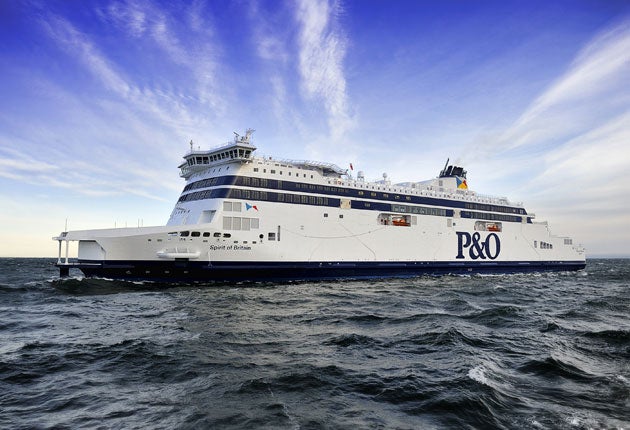Making waves: the ferry that's (almost) too big for the ports
Simon Calder steps aboard the 'Spirit of Britain' – the Channel's version of the superjumbo jet

Exactly 35 years after Concorde first carried fare-paying supersonic passengers, Britain's reduced ambitions were revealed when P&O's Spirit of Britain made her maiden cross-Channel voyage yesterday.
She is no faster than the ageing ship she is replacing: the first journey took slightly longer than the scheduled 90 minutes, owing to congestion in Calais. She is, however, the biggest ferry on the Channel, 700ft long and almost 100ft wide.
Dubai-owned P&O Ferries paid £150m for the ship, which was built in Finland. She holds 2,000 passengers, and can carry the equivalent of nearly three miles of cars, trucks and buses end-to-end on three vehicle decks. Unlike the line's existing ships, the new ferry gives cars separate loading lanes and a new dedicated deck.
The design of the ship was constrained by the limits of the harbours at each end of the route; 49,000 tonnes was the largest that Calais and Dover could handle, though both are set to be expanded by 2015.
Compared with the 25-year-old Pride of Dover which she replaces, Spirit of Britain offers a far more comfortable journey for everyone – especially lorry drivers. They have an exclusive lounge complete with showers, seat-back entertainment, free tea and coffee, and a dedicated outdoor smoking area.
The ship has twice the capacity of older ferries, yet consumes no more fuel. Besides the environmental benefits, doubling the efficiency saves money: at present 25p in every pound earned by P&O in fares is spent on fuel. A second, largely identical ferry, called the Spirit of France, will join the fleet in September, replacing the Pride of Calais which dates from 1986.
New touches range from free Wi-Fi to an upscale shopping mall selling designer leather goods. The company believes luxury products are more lucrative than the traditional alcohol and tobacco sales that were once the staple of the "booze cruise", and cigarettes, lager and whisky have been relegated to a lonely corner.
The on-board eating and drinking options have also moved upmarket, with a waiter-service brasserie and a high-street coffee shop. With all-round picture windows, the experience is now much brighter and provides a stronger sense of travelling as the cliffs of Picardy or Kent loom up.
Some passengers may find the complete absence of lifeboats disconcerting, but a new system, allowing passengers to reach life rafts from shutes, has been deployed instead.
Another feature is an alfresco bar. "In the summer it'll be great with the outside bar – more like a cruise than a ferry crossing," said Peter Welch from Kingsdown in Kent, who had booked a spot on the maiden voyage. But if the fare he paid is typical, the ship's owners may have to wait a while to recoup their investment. "You can't get better than £19, really, for a car and up to nine passengers."
Rivalry on the short-sea Channel crossings is intense, and the weak pound means that the perceived benefits of cross-Channel shopping trips have hit off-season bookings. P&O is the market leader from Dover, but it faces tough French competition from SeaFrance and the newly enlarged DFDS, as well as from the Eurotunnel shuttle from Folkestone to Calais.
"The Tunnel when it works is fine," said Helen Deeble, chief executive of P&O Ferries. "But it's very much 'a loo and a lightbulb' experience. We're trying to offer a different product."
Subscribe to Independent Premium to bookmark this article
Want to bookmark your favourite articles and stories to read or reference later? Start your Independent Premium subscription today.

Join our commenting forum
Join thought-provoking conversations, follow other Independent readers and see their replies